Minimalistic living is redefining the concept of home ownership in the current era, where housing costs are skyrocketing. This idea is actualized by the tiny homes movement, which has seen a spike in recent years. Tiny homes are heralded as the answer to affordable housing as they allow for a life uncluttered by needless possessions and freedom from the burdens of traditional homeownership.
But the biggest question is how much tiny homes cost. Is it a bargain compared to a traditional home, or does it come with hidden costs? Read on for a comprehensive guide on the real cost of tiny homes.
What is the Average Price of a Tiny House ?
The average cost of a tiny house ranges from $30,000 to $60,000, while the national average is $45,000. The cost depends on the level of customization and luxury. At the lower end of the spectrum, bare-bones kits can be purchased for as low as $4,000 to $10,000. These are typically basic structures without any luxurious finishes or custom features. Customized tiny homes with luxury finishes and detailed craftsmanship can easily exceed $180,000.
The exact cost will also depend on:
- Location
- Design
- Amenities
- Zoning and permits
- Land preparation
- Insurance and maintenance
Additionally, tiny houses in remote areas may need to be connected to electrical grid and sewer systems or off-grid systems such as solar panels and composting toilets for self-sufficient living.
How Much Does It Cost to Build a Tiny House?
Building a tiny home costs between $14,050 and $54,800 when considering the cost of materials only. The figure surges by 30% to 60% when labor expenses are added. Land costs are usually the biggest expense, reaching up to $150,000. Other expenses include foundation costs ranging from $4 to $7 per square foot and the cost of getting a building permit, which averages around $1,350 nationally.
How Much Does It Cost to Buy a Tiny House?
Buying a prefabricated tiny home costs around $4,000 to $180,000 or more. Basic prefabricated kits will set you back between $4,000 and $10,000. Still, you will need electrical wiring and plumbing, which will cost around $550 to $2,300 and $360 to $2,000, respectively. These units are readily available, with many nationwide providers offering free shipping.
Another option, which is often cheaper, is buying a preowned tiny house. But this option means giving up control of layout, design, and customization. You may need to write a new check to undo the previous owner’s design choices and imbue the house with your style, as these homes are highly personalized.
Tiny Houses Prices By Type
The type of home structure you choose affects the overall tiny house price. Here are some of the most common types of tiny houses and their average costs:
Tiny House on a Foundation: The cost to build a tiny home on a foundation ranges between $51,000 and $53,000. Foundation costs at the aforementioned rate of 4 and $7 per square foot add $5,000 to $8,000 to the project price.
Tiny House on Wheels: The cost to build a tiny house on wheels ranges between $60,000 to $80,000. It’s more than the cost to build a tiny home on a foundation, but it offers mobility.
Tiny Trailer House: A tiny trailer house costs between $4,500 to $9,000. It’s worth mentioning that you’ll need a suitable vehicle if you plan to move around.
Shipping Container Home: A container can be converted into a tiny home for about $19,600. The container itself costs around $1,500 to $5,000.
Bus Conversion: Also called skoolies, bus conversions cost between $30,000 and $130,000. This type of tiny home is built from a school bus and offers more space than other tiny homes.
How To Buy a Tiny House: What to Know Before You Buy
There are four major factors you should consider before purchasing a tiny home. This will ensure the tiny home buying process is smooth and that you are well prepared for the financial and lifestyle commitments of tiny home living.
What Types of Tiny Houses Can You Buy?
There are three main types of tiny houses you can buy: tiny house on wheels (THOW), park model (PMRV), and tiny house on foundation. Tiny houses on wheels are great for those who don’t want to be permanently tied to one location.
If your idea of tiny home living encompasses a compact dwelling with all utilities, a park model is your best bet. They are usually built to ANSI code (RV) and include one bedroom, one bathroom, and sometimes a loft space, all under 400 square feet.
Tiny houses on a foundation are built on a permanent foundation. Under the three main types are several variations, such as container homes, yurts, van life setups, shed living, and a-frame.
What To Consider Before You Buy a Tiny House
You will need to consider numerous critical factors before you buy a tiny home. Ask yourself the following questions:
- What is my budget?
- What is the quality of the structure?
- What else will I need to buy?
- Will I need to take out a loan?
- Where will I park or place the tiny house?
- Do I need permits to do so?
- Are there zoning restrictions on tiny homes in my desired location?
- What is the cost of utilities?
- Will I need a hook-up to the grid?
Where Can I Buy a Tiny House?
The most common places to buy a tiny home are through a builder or manufacturer on online stores like Amazon. You can also find pre-owned tiny homes for sale on online marketplaces like Craigslist or through tiny house real estate websites like Tiny House Listings.
Options For Financing a Tiny House
Cash is the most direct and simplest method of purchasing a tiny house. But not everyone has that option. The most common question people ask when buying a tiny house is: Can you take out a loan for your tiny house? The answer is yes, you can.
Personal loans, RV loans, contractor or builder financing, and credit cards are the most common credit options when buying a tiny house. Other common tiny house financing questions that people ask are:
Can I Use a Mortgage to Finance a Tiny House?
Yes, you can use a mortgage to finance a tiny house, but it’s mostly not possible as the structure has to meet certain criteria. It must be built on a permanent foundation, meaning tiny houses on wheels don’t qualify.
Its value must meet the minimum loan amount set by the lender, which is a major hurdle considering the average cost of a tiny house. Other lenders may also require the house to meet a certain minimum square footage. Most tiny homes don’t often meet this requirement.
How Are Tiny Homes on Wheels Financed?
Tiny homes on wheels are usually financed through personal loans, RV loans, credit cards, and cash. Some lenders may also offer specialized tiny home financing options, covering both on-wheel and on-foundation structures.
How Does Interest Work for Tiny House Loans?
Interest rates for tiny house loans vary depending on the type of loan, lender, and your credit score. Interest rates for personal loans currently range from around 14% to 22%, depending on the credit score.
RV loans currently attract interest rates of about 4% to 11% for an excellent credit score. Contacting your lending company is the easiest and most accurate way to discover interest rates applicable to you.
What To Consider Before Taking Out a Loan for a Tiny Home?
Before financing your tiny house, you need to be aware of the following:
- Your credit score as it will determine your loan amount and rate
- The total cost of the tiny house
- Whether your chosen lender offers financing for tiny homes specifically
- Different lenders offer payment terms and interest rates
- Whether you will need to put down a downpayment and how much that would be
- Additional fees
How To Build Your Tiny Home: A Step-by-Step Guide
From finding the right piece of land to construction, here are the steps to follow if you have decided building a tiny house is the right choice for you:
Finding the Right Land
If you’re targeting a permanent tiny home that is not placed on wheels, your first task in the building process is finding and purchasing your plot of land. Consider the local zoning laws and other restrictions that affect your ability to build a tiny house in that location.
Designing Your Tiny Home
The design of your tiny house should reflect your needs and lifestyle. Due to the limited space, you must be strategic with the layout and design. You can hire an architect or work with a tiny house builder who offers custom designs.
Obtaining Necessary Permits
Depending on your location, you may need certain permits before building your tiny house. Building permits, zoning and land use approvals, and septic system approval are some of the most common permits required.
Choosing a Builder
You can either build the tiny house yourself if you have the necessary skills and experience or hire a professional builder. If you decide to go for the latter, make sure to research and vet multiple builders. Ideally, they should have experience with tiny house construction and be able to show you examples of their work.
Construction
The construction process will vary depending on the type of tiny house you are building. If it’s a DIY project, make sure to plan and budget accordingly for materials and any necessary tools or equipment. If working with a builder, make sure to communicate your vision.
Maximizing Space and Living Comfortably in a Tiny Home
Tiny home living requires creativity and efficient use of space. Here are some tips to help you maximize your space and live comfortably:
- Use multi-functional furniture: These include storage ottomans or beds with built-in storage.
- Utilize vertical space: Install shelves or cabinets on walls to free up floor space.
- Choose a minimalist lifestyle: Downsizing your possessions will save space and make cleaning and organizing easier.
- Utilize outdoor space: If you have access to outdoor space, consider adding a deck or patio for an additional living area.
- Get creative with storage solutions: From utilizing under-bed storage to installing shelves in unused spaces like above doorways, there are plenty of ways to maximize storage space.
- Consider multi-use rooms: You can designate areas for different purposes without having separate rooms. For example, a Murphy bed can be used in a living room as seating during the day and a bed at night.
The Financial Implications of Tiny Home Living: Additional Tiny Home Costs to Consider
While the cost of a tiny house may seem significantly lower than a traditional home, it’s essential to consider additional costs that come with tiny home living. These include:
- Zoning laws: Zoning laws may limit where you can park or install your tiny home. In most cities and towns, tiny houses are placed in the same category as RVs in terms of zoning laws. This means they can only be parked in designated areas, which may require additional fees.
- Land surveyor: Building a tiny house on a foundation will require a land surveyor to ensure the building complies with local regulations. The cost of hiring a land surveyor averages $510.
- Repairs and maintenance: A typical tiny house requires $550 to $1,000 annually to keep it in good condition. This is for standard maintenance only, like plumbing and electrical issues. Tiny homes on wheels may require additional maintenance and repair costs if they are constantly being moved.
- Homeowners insurance: Insuring a tiny home costs around $100 a month. Permanent tiny homes are insured as primary residences or accessory dwelling units, such as guest houses, depending on the property’s zoning laws. Tiny homes on wheels are insured as RVs, although they may have limited coverage.
- Furniture and appliances: When moving into a tiny home, you may need to invest in new furniture and appliances that can fit into the limited space and that allow for efficient use of space. These items can cost between $400 to $4,000 and an additional $125 to $275 for installation.
- Utilities: Utility costs for a tiny house can be as low as $50 per month.
- Resale value: Tiny houses often don’t appreciate in the same way that traditional homes do. If you plan on selling your tiny home in the future, be prepared for a lower return on investment.
Benefits of Tiny Home Living
Tiny home living is a suitable option for young adults starting their careers, as well as those struggling with student loans and those with a desire to explore. In addition to upfront costs being significantly lower than traditional houses, their mobility factor offers individuals the flexibility to relocate. This caters to the millennial sense of wanderlust.
Living in a tiny home often means a reduced carbon footprint as well, as these compact dwellings usually require less energy and materials to construct and maintain. Many also believe that the minimalistic lifestyle accompanying tiny home living can lead to increased happiness. This is because it encourages individuals to focus less on material possessions and more on experiences, personal growth, and relationships.
Other benefits include fewer cleaning requirements, lower utility costs, decreased property taxes, and sustainability. However, tiny home living requires a certain level of commitment to minimalism and a willingness to forego some of the conveniences of traditional housing.
Tiny Home Living: Is It Right for You?
Tiny home living may be a perfect fit if you crave simplicity, are comfortable with a smaller living space, and value experiences over material possessions. Traditional housing may be better if you prioritize space and convenience over these factors or have a large family. If you plan to own a tiny home, consider all the costs and implications outlined in the article.
FAQs
Is it cheaper to buy or build a tiny house?
It is cheaper to build a tiny house than to buy a tiny home. Building your own tiny house also allows you to customize and personalize the home.
Can you permanently live in a tiny home?
You can permanently live in a tiny home if it complies with local zoning laws and building codes. You also need to ensure that you have access to utilities.
Is it cheaper to live in a tiny home or an apartment?
It is generally cheaper to live in a tiny home than an apartment. The cost of housing and utilities is often lower in a tiny house.
How much money do you save with a tiny house?
A tiny house saves you thousands in upfront costs, utility bills, and maintenance. 58% of people owning tiny homes don’t have mortgages, 55% have about $11,200 more savings than the average American, and 65% have zero credit card debt.












